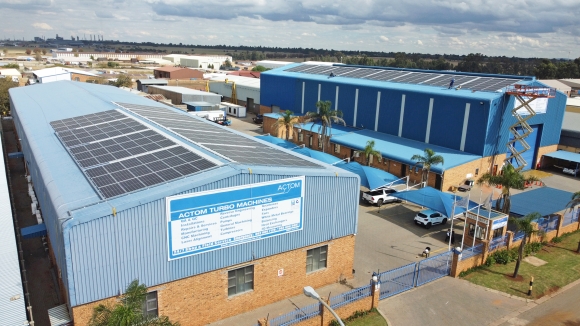Climate change is real and undeniable! The effects are already visible, and the result of not acting immediately will undoubtedly be catastrophic to civilisation as we know it.
As per the United Nations, burning fossil fuels – coal, oil, and gas – is by far the largest contributor to global climate change, accounting for over 75 per cent of global greenhouse gas emissions and nearly 90 per cent of all carbon dioxide emissions.
As greenhouse gas emissions blanket the Earth, they trap the sun’s heat. This leads to global warming and climate change. The world is now warming faster than at any point in recorded history. Warmer temperatures over time are changing weather patterns and disrupting the normal balance of nature. This poses many risks to human beings and all other forms of life on Earth.

According to the US Department of Commerce’s National Oceanic and Atmospheric Administration (NOAA), global carbon dioxide is more than 50% higher than pre-industrial levels. In May 2022, the carbon dioxide in the air measured 421 parts per million, pushing the atmosphere further into uncharted territory.
This increased atmospheric CO2 is trapping heat radiating from the planet’s surface, which would otherwise have escaped into space and is unleashing a cascade of weather impacts. Countries across the globe are experiencing episodes of extreme heat, drought, wildfires, heavier precipitation, flooding, tropical storms and increasing sea surface temperatures, rising sea levels, and ocean deoxygenation.
In 2020, South Africa was labelled the most polluting country in Africa. That year, South Africa emitted nearly 452 million tons of CO2, ranking Egypt second at approximately 214 million tons. Algeria, Nigeria, and Morocco were other large producers of CO2 emissions on the continent.
The above begs the question, how do we fix this planet for our children? The answer is Decarbonisation.
Decarbonisation refers to reducing carbon intensity by lowering the amount of greenhouse gas emissions produced by burning fossil fuels. Reducing the amount of carbon dioxide occurring due to transport and power generation is essential to meet global temperature standards set by the Paris Agreement.
In September 2021, South Africa announced that it intends to limit Greenhouse Gas (GHG) emissions to between 398 and 510 Metric tons of carbon dioxide equivalent (MtCO2e) by 2025 and between 350 and 420 MtCO2e by 2030, significantly lower than targets communicated in 2016. These new targets will also see South Africa’s emissions decline from 2025, a decade earlier than planned.
At COP26, the South African government forged the Just Energy Transition Partnership (JETP) (aka “just transition”) jointly with the governments of the United Kingdom, the United States, France, Germany, and the European Union.
The just energy transition focuses on the transition of South Africa’s energy sector as the country navigates the shift away from coal towards cleaner energy sources.
As South Africa is the world’s 13th-biggest emitter of greenhouse gases, with Eskom’s 15 coal-fired plants the leading contributor, the JETP agreement secured $8.5 billion to help South Africa transition away from fossil fuel and reduce its emissions.
South Africa’s 2019 energy blueprint- currently under review- envisions coal accounting for 59% of electricity output by 2030, down from more than 80% currently. About 18 gigawatts of Eskom’s older coal capacity is scheduled to be shut down by 2035. Kusile and Medupi, the only remaining plants that use the fuel expected to still be operational by 2050.

Renewable technologies have evolved rapidly, significantly reducing the cost of producing electricity. The weighted average cost that Eskom will be procuring power from the wind and solar PV projects is approximately 47,3 South African cents per kW/hour. This is cheaper than the new build coal-fired power stations, considering that the wind and solar solutions include the cost of capital expenditure.
Onshore wind and solar power feature strongly in South Africa’s renewable energy mix, due to be contracted from independent power producers by the end of September 2022 under the government’s rolling procurement programme.
As of September 2022, 25 renewable energy projects worth R50-bln have been selected for development in South Africa.
The chosen projects, which will provide an estimated 14 000 jobs, are expected to start generating electricity by April 2024. Together they will produce an estimated 4,500-Gigawatt hour (GWh) of green electricity each year, helping to avoid nearly five million tonnes of CO2 per annum once fully operational.
The long-term solution to decarbonisation is clear: South Africa and the rest of the world need to expediently evolve from burning fossil fuels as our primary energy source to adopting cleaner renewable energy sources.
We approached Mervyn Naidoo, Chief Executive Officer, ACTOM, for his view on where South Africa is with decarbonisation, where we should be and how he believes we get there.
“In my opinion, decarbonisation in South Africa is a major and real issue which needs to be addressed, the major problem being in the energy sector. The authorities need to identify the largest contributors to these emissions in SA and force a phased action plan tracked to resolution,” Naidoo said.
“The implications of non-action will be dire as there will be tax consequences of non-compliance, and I suspect there will also be adverse effects regarding global trade restrictions.
One of our biggest obstacles is that SA has many other burning priorities that rank above this important matter. As a result, it is, unfortunately, getting pushed aside. To name a few,
- We have serious financial constraints within which to affect the required changes.
- The required actions to migrate away from coal and fossil fuels will have a major adverse impact on unemployment, and there is a political reluctance to address these issues.
- One of the other major actions required should be to migrate travel to modes such as rail, which will help decarbonisation. This is, however, very complex in SA due to multiple stakeholders such as the taxi industry etc.
To this end, businesses and civil society must engage with the government to develop long-term sustainable solutions. In the short term, businesses, including SEO, need to focus on identifying and addressing quick fixes to reduce the current emissions of the existing plant.

From ACTOM’s perspective, the short-term solution is that we have world-class decarbonisation technology solutions and are currently playing and will continue to play a significant role in reducing existing plant emissions.
In the long term, ACTOM can manufacture the bulk of electrical products going into renewable energy power generation plants.
Together with our global strategic partners, we have positioned ourselves to expand our production facilities and product ranges to cope with the approximately 25GW of renewable power developed in SA over the next ten years,” Naidoo concluded.
While there is a major dependency on government and business to lay the foundations for a cleaner and greener future, this article would be negligent if we ignored the role each person can and should be playing in reducing their carbon footprint.
According to the United Nations, herewith are a few pointers on how you, as an individual, can reduce your carbon footprint:
- Eat locally produced and in-season foods
- Reduce food waste
- Compost your food waste
- Wash your clothing in cold water
- Drive less
- When buying food, ensure the packaging is biodegradable
- Reuse, reduce and recycle
- Buy from energy-conscious companies – like ACTOM.

